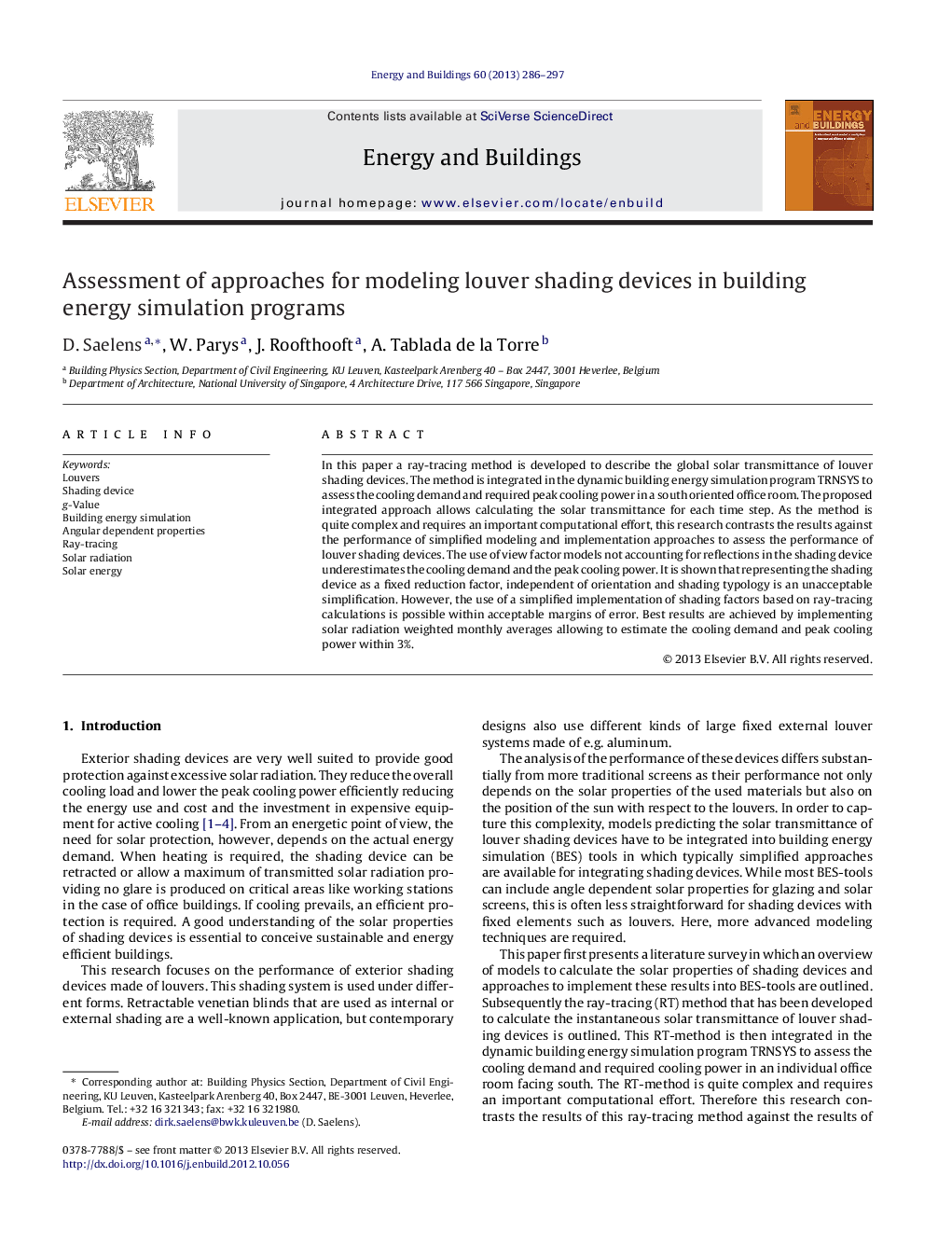| Article ID | Journal | Published Year | Pages | File Type |
|---|---|---|---|---|
| 263358 | Energy and Buildings | 2013 | 12 Pages |
In this paper a ray-tracing method is developed to describe the global solar transmittance of louver shading devices. The method is integrated in the dynamic building energy simulation program TRNSYS to assess the cooling demand and required peak cooling power in a south oriented office room. The proposed integrated approach allows calculating the solar transmittance for each time step. As the method is quite complex and requires an important computational effort, this research contrasts the results against the performance of simplified modeling and implementation approaches to assess the performance of louver shading devices. The use of view factor models not accounting for reflections in the shading device underestimates the cooling demand and the peak cooling power. It is shown that representing the shading device as a fixed reduction factor, independent of orientation and shading typology is an unacceptable simplification. However, the use of a simplified implementation of shading factors based on ray-tracing calculations is possible within acceptable margins of error. Best results are achieved by implementing solar radiation weighted monthly averages allowing to estimate the cooling demand and peak cooling power within 3%.
► A ray-tracing method is developed to describe the solar transmittance of louvers. ► The method is integrated in the dynamic building energy simulation program TRNSYS. ► Using a fixed shading factor proofs to be an unacceptable simplification. ► Using a view factor method proofs to be an unacceptable simplification. ► Simplified implementations are possible within acceptable margins.
